Lasik eye surgery - series
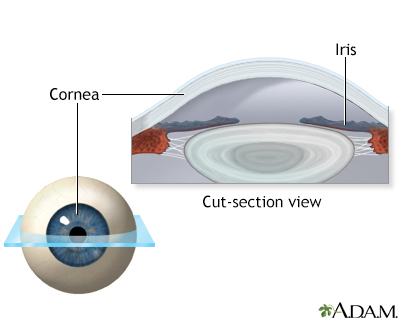
Normal anatomy
The cornea is the transparent part of the eye that covers the iris. It is also the main light bending part of the eye.
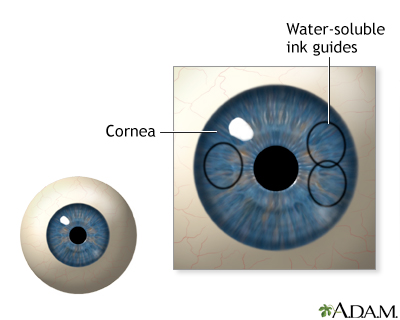
Procedure, part 1
Anesthetic eye drops are given to numb the eye and the surgeon marks the cornea with water-soluble ink to guide replacement of the corneal flap.
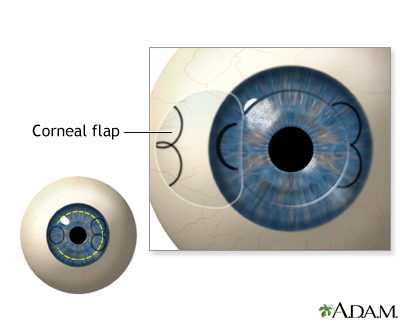
Procedure, part 2
The surgeon performs a keratectomy, which creates a corneal flap. A keratectomy is a procedure that uses a small instrument that makes a cut in the cornea as it moves across it. The flap is lifted and reflected, exposing the cornea beneath.
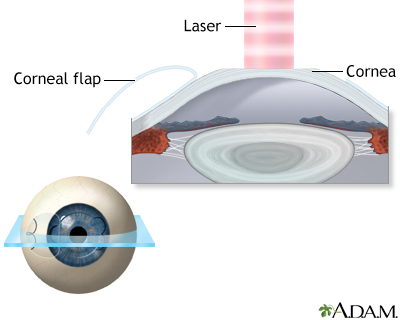
Procedure, part 3
A computer-controlled laser reshapes the cornea to the prescribed shape for clear vision.
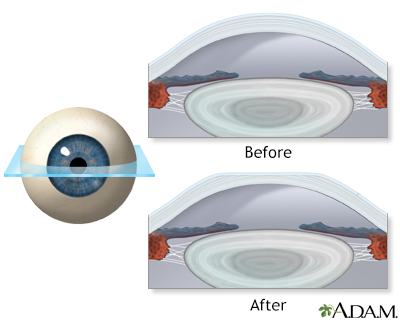
Aftercare
The corneal flap is repositioned and bonds to the cut edge of the cornea quickly.
Related Information
NearsightednessFarsightedness
Laser surgery for the skin
LASIK eye surgery
BACK TO TOP
Review Date: 8/5/2024
Reviewed By: Franklin W. Lusby, MD, Ophthalmologist, Lusby Vision Institute, La Jolla, CA. Also reviewed by David C. Dugdale, MD, Medical Director, Brenda Conaway, Editorial Director, and the A.D.A.M. Editorial team.

Health Content Provider
06/01/2025
|
A.D.A.M., Inc. is accredited by URAC, for Health Content Provider (www.urac.org). URAC's accreditation program is an independent audit to verify that A.D.A.M. follows rigorous standards of quality and accountability. A.D.A.M. is among the first to achieve this important distinction for online health information and services. Learn more about A.D.A.M.'s editorial policy, editorial process and privacy policy. A.D.A.M. is also a founding member of Hi-Ethics. This site complied with the HONcode standard for trustworthy health information from 1995 to 2022, after which HON (Health On the Net, a not-for-profit organization that promoted transparent and reliable health information online) was discontinued. |
The information provided herein should not be used during any medical emergency or for the diagnosis or treatment of any medical condition. A licensed medical professional should be consulted for diagnosis and treatment of any and all medical conditions. Links to other sites are provided for information only -- they do not constitute endorsements of those other sites. © 1997- 2025 A.D.A.M., a business unit of Ebix, Inc. Any duplication or distribution of the information contained herein is strictly prohibited.
